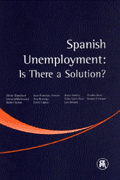Studies in this week’s Hutchins Roundup find that credit growth predicts unemployment risk, relocation of kids from disadvantaged neighborhoods leads to better outcomes, and more.
Want to receive the Hutchins Roundup as an email? Sign up here to get it in your inbox every Thursday.
Low unemployment and rapid credit growth raise the risk of a future downturn
The unemployment rate in the United States has fallen to historically low levels in recent years, leading some to question whether economic imbalances are building that could lead to a downturn in the future. Studying U.S. business cycles from 1960 to 2017, Michael Kiley of the Federal Reserve Board finds confirmation for this view: When the unemployment rate is low, the probability that it will increase sharply over the next three years is significantly higher. In addition, he shows above-trend credit growth heightens the risk that unemployment will rise in the future. Kiley’s analysis suggests the likelihood of a rise in unemployment, which has been low for the last several years, has returned to historically-typical levels in the last year as the unemployment rate has fallen and credit growth has increased.
Displacement from demolished public housing led to better labor market outcomes
Faced with deteriorating buildings and growing maintenance costs, in the late 1990s, Chicago’s public housing authority demolished many of its residential high-rises and offered displaced residents vouchers to find housing elsewhere. Eric Chyn of the University of Virginia uses administrative, social service, and school records to track the long-term outcomes of children displaced as a result of these demolitions. He finds that, relative to their non-displaced counterparts, displaced children lived in higher-income neighborhoods in the years after demolition, had better employment and earnings outcomes, and were less likely to be arrested for violent crimes as adults. These findings corroborate a large body of research showing the economic benefits for children of relocating from disadvantaged to relatively higher-income neighborhoods.
Only the biggest banks create risks for economic growth
Post-crisis banking regulations are more stringent for larger banks than for smaller banks, based on the idea that larger institutions pose a greater threat to the economy if they fail. But where should banking regulators draw the line between large and small banks? How much greater is the risk generated by big banks? Amy Lorenc and Jeffery Zhang of the Federal Reserve Board examine bank transaction data from 1960 to 2017 and find that financial stress at the top 1 percent of largest banks adversely affects the real economy, but stress at the remaining 99 percent of banks has almost no effect. The authors show that stress at banks with more than $250 billion in total assets reduces real GDP growth by more than three times as much as the same stress at banks with more than $30 billion in assets, suggesting that relaxing some regulation of small banks wouldn’t pose substantial risks to the economy.
Chart of the week: Fed Beige Book references to ‘shortages’ have picked up

Quote of the week
“Global debt—both public and private—has reached an all-time high of $182 trillion—almost 60 percent higher than in 2007. This buildup has left governments and companies more vulnerable to a tightening of financial conditions. Emerging and developing economies are already feeling the pinch as they adjust to monetary normalization in the advanced world. That process could become even more challenging if it were to accelerate suddenly. It could lead to market corrections, sharp exchange rate movements, and further weakening of capital flows. We estimate that emerging economies—excluding China—could potentially face debt portfolio outflows of up to $100 billion—which would broadly match outflows during the global financial crisis. This should serve as a wake-up call,” says Christine Lagarde, managing director at the International Monetary Fund.
“It’s not about sailing alone, with each country responding only to national concerns. Guarding against potential turbulence will require countries working together in a cohesive and collaborative manner. As an example of this, we know that governments can make their economies less vulnerable to disruptive capital flows by reducing current account imbalances. How? By increasing public investment where fiscal positions are healthy and by lowering fiscal deficits elsewhere. These policy actions at the national level complement each other at the global level.”









Commentary
Hutchins Roundup: Unemployment Risk, Public Housing Demolition, and more
October 4, 2018